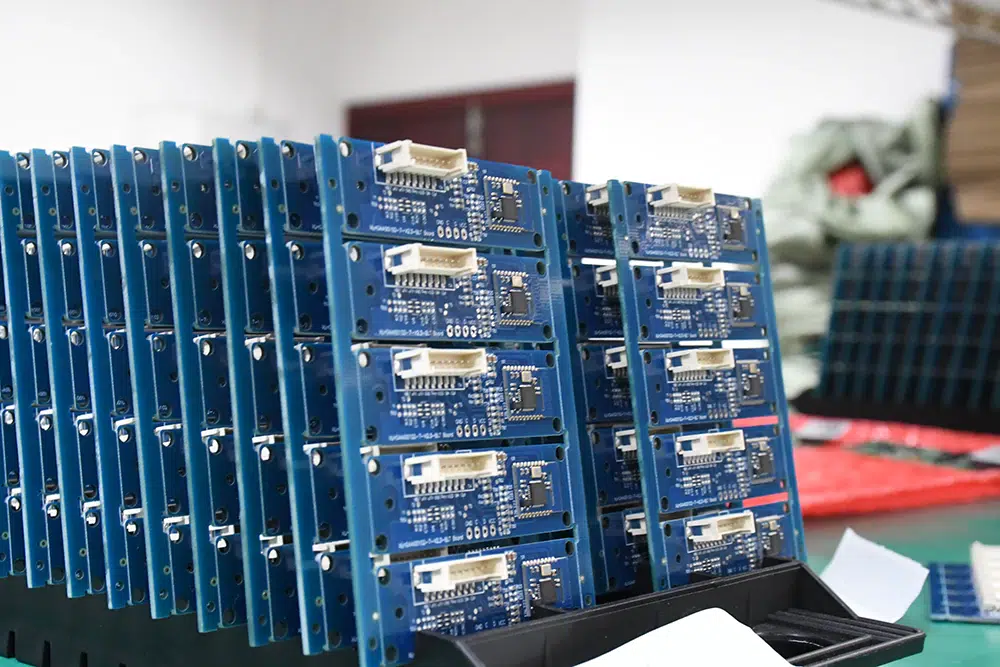In the world of electronics, the efficient management of heat in printed circuit boards (PCBs) is critical for ensuring the reliability and longevity of devices. Thermal management in PCBs involves controlling the temperature of the board and its components to prevent overheating, which can lead to performance degradation, premature failure, and reduced lifespan of electronic devices. This article explores the fundamental principles of PCB thermal management, the challenges involved, and various strategies to address them effectively.
Why thermal management is crucial?
As electronic devices become more compact and powerful, the density of components on PCBs continues to increase. This trend leads to higher power dissipation, which in turn generates more heat. Excessive heat can cause a variety of issues:
1. Performance Degradation: High temperatures can affect the performance of electronic components, leading to slower operation or erratic behavior.
2. Component Failure: Prolonged exposure to high temperatures can accelerate wear and tear, causing components to fail prematurely.
3. Reduced Lifespan: Heat stress can shorten the overall lifespan of both individual components and the PCB itself.
What are the methods of PCB thermal management?
Effective thermal management involves several strategies and techniques designed to dissipate heat and maintain a safe operating temperature. These strategies can be categorized into passive and active cooling methods.
1. Passive Cooling Methods
Passive cooling relies on the natural dissipation of heat without the need for mechanical assistance. Common passive cooling techniques include:
– Heat Sinks: Heat sinks are metallic components attached to heat-generating components to increase the surface area for heat dissipation. They are usually made of materials with high thermal conductivity, such as aluminum or copper.
– Thermal Vias: Thermal vias are conductive pathways drilled through the PCB and filled with a conductive material. They help transfer heat from the surface to the inner layers of the PCB, where it can be more effectively dissipated.
– Thermal Pads and Pastes: These materials are placed between heat-generating components and heat sinks to improve thermal conductivity and ensure efficient heat transfer.
– Copper Planes and Heat Spreaders: Incorporating large copper planes or heat spreaders into the PCB design can help distribute heat more evenly across the board.
2. Active Cooling Methods
Active cooling involves using external mechanisms to enhance heat dissipation. These methods are particularly useful for high-power or densely packed PCBs:
– Fans and Blowers: Fans and blowers can be mounted near the PCB to increase airflow and facilitate the removal of hot air from the vicinity of heat-sensitive components.
– Peltier Coolers: Peltier devices, or thermoelectric coolers, create a temperature difference through the application of an electric current. They can be used to actively cool components, although they are less common due to their complexity and power consumption.
– Liquid Cooling: Liquid cooling systems use a coolant to absorb and carry away heat. These systems are more complex and typically used in high-performance applications like gaming PCs or servers.
What should be considered when design PCB thermal management?
Effective thermal management begins with careful PCB design. Key considerations include:
1. Component Placement
Strategically placing components on the PCB can greatly influence thermal performance. High-power components should be positioned in areas with good airflow and away from heat-sensitive components. Grouping heat-generating components together and placing them near heat sinks can also enhance thermal management.
2. Thermal Simulation
Using thermal simulation software during the design phase allows engineers to predict how heat will spread across the PCB and identify potential hotspots. This simulation helps in optimizing the layout and cooling solutions before physical prototypes are built.
3. Material Selection
The choice of PCB materials can impact thermal performance. For instance, materials with high thermal conductivity, such as certain types of FR-4 or polyimide, can improve heat dissipation. Additionally, high-temperature solder and adhesives can withstand elevated temperatures without degrading.
4. Heat Pathways
Creating efficient heat pathways is essential for effective thermal management. This involves designing pathways that facilitate the transfer of heat from high-power components to heat sinks or other cooling solutions.

Challenges in PCB Thermal Management
Despite the availability of various thermal management techniques, several challenges can arise:
– Space Constraints: In densely packed PCBs, space limitations can restrict the implementation of effective cooling solutions. Innovative design approaches and miniaturized cooling components may be required.
– Cost: Advanced cooling solutions, such as liquid cooling systems or high-performance heat sinks, can increase the overall cost of the device. Balancing thermal performance with cost considerations is crucial.
– Reliability: Active cooling solutions, like fans or Peltier devices, introduce moving parts or electrical elements that can potentially fail. Ensuring the reliability of these components is important for overall system stability.
Conclusion
PCB thermal management is a critical aspect of electronics design that ensures the reliable operation and longevity of electronic devices. By employing a combination of passive and active cooling methods, carefully considering design parameters, and addressing potential challenges, engineers can effectively manage heat and prevent issues related to overheating.
As technology continues to evolve, ongoing advancements in materials and cooling techniques will play a key role in addressing the growing demands of modern electronics. Through meticulous planning and innovative solutions, the challenges of thermal management can be effectively tackled, paving the way for more reliable and efficient electronic devices.











